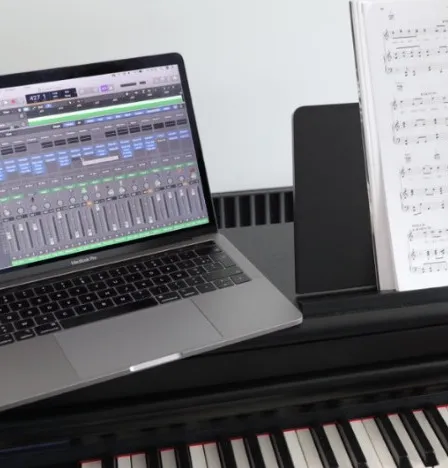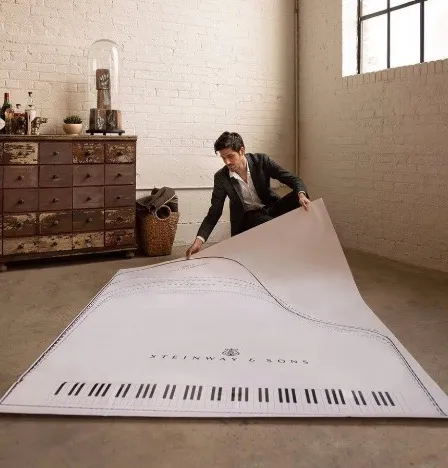Choose your piano in 5 steps
You don't buy a piano every day. You want to find the right piano to suit your needs. Whether you're a aspiring pianist or a professional musician, the steps below will get you started.
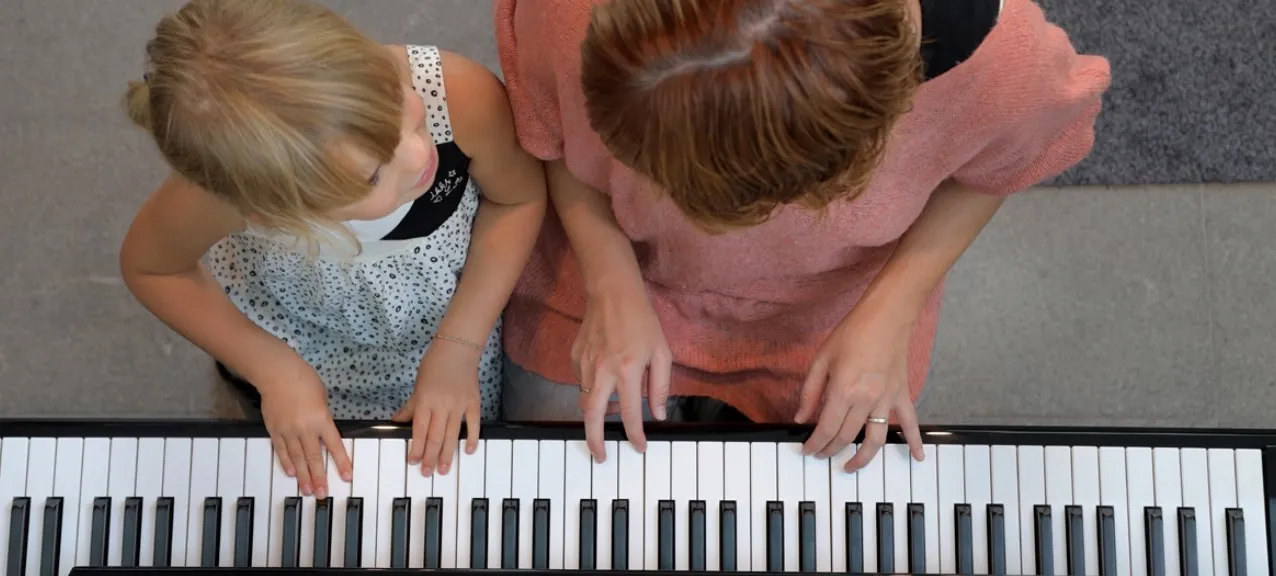
Step 1: Which type?
In many ways, the division between acoustic and digital pianos is outdated and ignores the many interesting combinations that can be found. For example, there are acoustic pianos today that combine the artistic and pedagogical advantage of real piano technology and sound with a headphone system. Broadly speaking, there are 5 different types. Decide for yourself which features you definitely want in your new instrument. If possible, also distinguish between "must have" and "nice to have". Then you can find which type meets your needs in the overview.
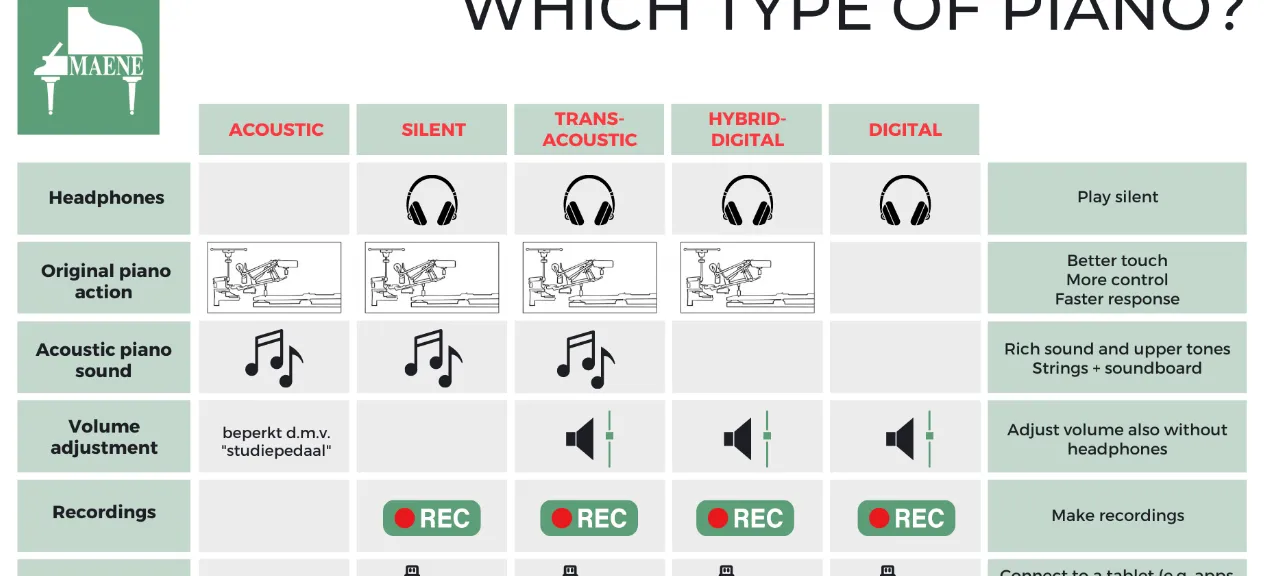
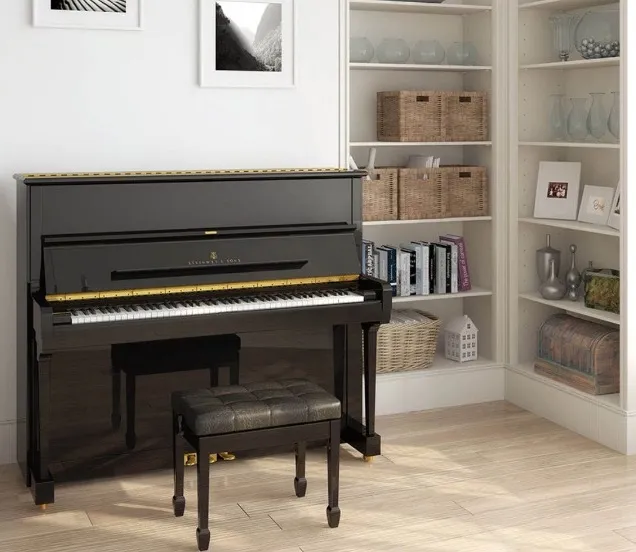
Step 2: Which model?
Do you already have a spot in mind where the instrument will be placed? Acoustic pianos vary in size from smaller upright pianos to large grand pianos. As a basic rule, you can say: the bigger the piano, the better the sound quality (so bigger is not always louder). The difference between a grand piano and upright piano is not just visual. A grand piano will sound better and the action will be faster and more responsive.
With digital pianos, the model has no impact on the sound and there are portable versions ("stage pianos") in addition to grand piano and upright models. All the instruments we offer have a full-size keyboard (88 keys). As a result, the width of the keyboard is usually 135-150cm. For grand pianos, you can borrow a pattern from us to get a better idea of the possibilities at home. We can also make an estimate of the acoustics and possibilities together with you. In our webshop, you can easily filter the desired model.

Stap 3: Quality
The quality of your chosen type and model depends on several factors. The more high-quality the piano, the more fun and motivating it is to (continue to) play. A high-quality instrument also tends to last longer. Our piano consultants will be happy to help you in the showroom or via our web chat with detailed explanations, but here we give you some main points to consider when browsing through our webshop.

Acoustic pianos:
- Design: The most important and simplest example is the height of an upright piano or length of a grand piano. The higher the upright piano or the longer the grand piano, the larger the soundboard and longer the strings. This results in a rich, full and transparent tone. For an upright, the smallest instruments start from about 110 cm and the tallest are about 130 cm. It is best to aim for an instrument with a height of at least 120 cm, because then you have a nice balance between the bass and treble. In addition, each builder has their own specific building methods, which our piano consultants can explain.
- Building materials: the quality of the soundboard wood, the hammerheads, the strings, etc. contribute to a beautiful sound. An example: a solid soundboard with a higher density of wood grain will produce a better and more colourful sound than a laminated soundboard.
- Craftsmanship: every acoustic piano needs to be regulated, tuned and voiced. When voicing, a piano technician will skillfully work the hammerhead to create an even sound.
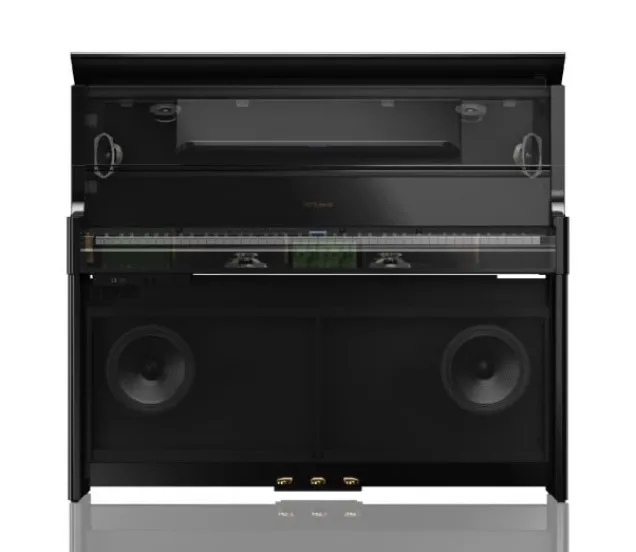
Digital pianos:
- Sound: The greater the power of the amplifier and the better the samples, the richer the sound. The size, number and positioning of the speakers also play an important role. Compare it to the speakers of your smartphone and a nice hi-fi system. The hi-fi system has greater power and better speakers and - regardless of the volume setting - will give a much nicer sound than your tiny smartphone speakers.
- Keyboard: The more it resembles a real piano, the better. Thus, there are digital pianos with wooden keys to better imitate the feel. In most cases, the better digital pianos have longer wooden keys. This makes the playing feel more realistic and closer to a real acoustic piano.
- Furniture: do you want an instrument in high gloss or do you prefer matt black? Portable or a grand piano?
- Extras: every digital piano has some basic features such as a headphone jack, recording options, a metronome and some extra sounds. But there are also instruments with a lot of extra features such as built-in lesson functions, accompanying styles/rhythms, a wide range of other instruments, connection options (USB, Bluetooth, etc...).
Combination instruments:
With these instruments, elements of both acoustic and digital pianos will determine the quality.

Step 4: It's personal
After you have narrowed down your choice through the steps above, the moment comes when you have to rely on your own taste and preference. You can find a lot of information on our website and our YouTube channel, but the speakers on your smartphone or computer cannot compare to the real sound of our instruments. It's always worth to come and test the instrument live in one of our showrooms.

Step 5: Budget
Have you found your ideal instrument, but is it beyond your budget? Well then, we have a wide range of value-for-money second-hand instruments. All these instruments have been thoroughly overhauled and come with a 10-year warranty. So you can rest assured that you won't face any unpleasant surprises.
Another option is our lease formula. This allows you to purchase your favourite piano over 50 months (with no obligation to buy). Finally: would you like to try it out first before making a purchase? With our rental system, you can get a quality acoustic, digital or silent acoustic piano for a low fee. If you like playing the piano, you can recover part of your rental fee when you buy another piano.



